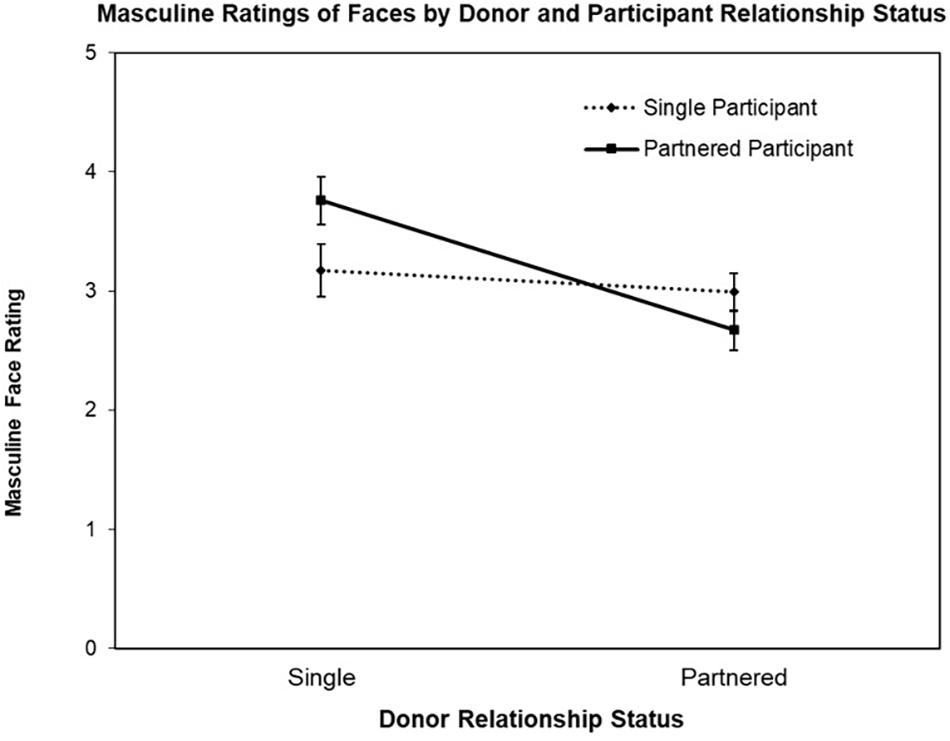「身長170cm以下に人権はない」
そのように発言し大炎上した たぬかな氏。
正直彼女がなぜここまで炎上したのか私には一切計りかねますが、彼女の主張は一理あるかと思います。すなわち
チビは女性から相手にされず モテにくくなる。

チビにとって恋愛はかなり難易度の高い営みだ。

ぼくには。。。、
人権がないっッ!!!!
現在身長が170cm以下の男性諸君は、涙を流してたぬかなを憎んでいるかもしれません。自分のことを馬鹿にされた と。
しかし、この「チビ モテない説」はどこまで正しいのでしょうか?更に、チビを覆すことは可能なのでしょうか?
今回は、学術論文を引用してチビは本当にモテないのか検証していきます。そして チビはどうすれば逆転可能なのかまで検証してみることにします。

ちなみにMurasakiは、たぬかな氏の大ファンである! 彼女の軽快で下品なトークは、仕事で疲れ荒んだ心に心地よい。
彼女も炎上から復帰後、元気イッパイ チビたちを煽って楽しんでいる。ぜひ今後も楽しいトークを聞かせてほしい。
よってたぬかな氏を侮辱したり今更「人権無い」発言を蒸し返してあーだこーだ言うつもりはさらさらない。
チビ モテない説の結論

まず先に結論を述べておこうと思います。
チビがモテないことは客観的な研究で明らかになっています。
2016年の研究を紹介します。えひめ結婚支援センターのデータを分析した結果、チビ男性はモテないことが判明しました。特に150cm ~ 160cmの男性は中卒男性と同等程度の非モテでした。
-1024x456.png)
ホビットたちは、先天的な要因だけで それ以外の要素が優れていたとしても足切りされてしまうのでは?と感じてしまう恐ろしい研究です。

身長なんて後天的にどうにかならないでしょ?
これってかなりマズイよな。。。、

だからこそ、科学の魔法を使うんだ。
大丈夫 どうにでもなるさ。
先天的な要素で決定する身長で非モテが決定してしまうのは、男性からしたら理不尽極まりないでしょう。それがホビットを絶望させる大きな要因であると考えられます。
しかし、学術論文の数々は「非モテ因子であるチビを突破する方法」を提示しています。まだ絶望するのは早いです。
よってここからは、チビを突破する方法を紹介して記事を終えようと思います。
チビを突破する科学

先天的な要素で決定する身長でモテが左右されるとなると、多くのチビたちは絶望したかもしれません。先天的に決まってしまっているのでしたら、もはや諦めるしか無いのでしょうか。

さまざまな研究結果から、チビが不利であることが示唆されているが、それらを突破するための方法が判明している。

安心した。。、 早く教えてくれ…!!!
科学的にはチビは非モテ因子として機能していることが判明していますが、それをチャラにする要素がすでに提示されています。そしてこれは朗報ですが、全て後天的に獲得可能な要素です。
ここからは、チビを突破する後天的に鍛えられる項目を紹介して記事を終えたいと思います。
チビを突破する方法① : 暴力性

科学的には、男性のモテシグナルの一つとして「暴力性」の存在が示唆されています。さまざまな研究結果から、暴力性がモテシグナルになっていることはほぼ間違いないかと思われます。
上記の記事で紹介していますが、実際に犯罪者やいじめの加害者は 夜のプロレスパートナーが多いことが判明しています。

ここで注意なのは「直接的な方法で暴力を女性に対して行使してはいけない」と言うことだ。

それはそうだよね。。、
「暴力性」の発露は 単に暴力や暴言だけで行われるわけではありません。よってこのような「安直な暴力」に頼らずシグナリングする必要があります。
この「安直な暴力性」以外で「暴力性」を発露する方法は科学的に判明していますので、そちらは別の記事に譲りたいと思います。
そしてこの「暴力性」ですが、どうやらあらゆる非モテ要素を超えてモテに寄与する可能性があることが科学的に示唆されています。
少し古いですが、1995年の研究を紹介します。外見的魅力や社会的地位、経済的豊かさなど さまざまな一般魅力が乏しいギャングですが 彼らはそうでない男性と比較して優位に夜のプロレス相手を多く獲得していました。
This analysis revealed that the 57 male gang members involved in the outbreak had a significantly (p < .03) higher average number of sex partners than did the 63 male non‐gang members who were also involved in the outbreak.
https://www.tandfonline.com/doi/abs/10.1080/00224499509551792
これは人がオラついてしまうのは、部分的には目立つことで異性の目に留まることを目指している選択圧の結果であると解釈できます。
実際に部活を引退した野球部が肩を揺らして歩き始め、綺麗な同級生や後輩と一緒に歩いている姿を嫉妬の眼差しで陰から見守っていた諸賢にとっては 納得の研究結果と言えそうです。

まじか。
確かにチビだから絶望してしまうのはまだ早いかもしれないね。。。、

その通りだ。
後天的にそれは獲得されるから、努力あるのみだ。
ちなみにビッグモーター社の旧副社長、兼重宏一氏の身長は145cm程度と言われています。

彼がこのような暴力的なLINEを部下に送ってしまったのは、もしかしたら舐められないようにするため モテるための進化的選択行動の可能性があります。
このような「暴力性」の発露はカッコ悪いのでやめた方が良いかと思います。
ちなみに「暴力性」シグナルがあればモテるから、外見は気にしなくて良い と言うのは誤りです。
2017年の研究を紹介します。研究者らは誤解を恐れず言い切ると「男性の性格は性愛においては容姿の一定ラインを超えない限り評価されず、また容姿が優れない男性は実際の性格によらず好ましくないと評価される」ということを発見しました。
Women and their mothers were strongly influenced by the physical attractiveness of the target men and preferred the attractive and moderately attractive targets. Men with the most desirable personality profiles were rated more favorably than their counterparts only when they were at least moderately attractive. Unattractive men were never rated as more desirable partners for daughters, even when they possessed the most desirable trait profiles.
https://link.springer.com/article/10.1007/s40806-017-0092-x
研究では、女性とその母親に身体的魅力が異なる3人の白人男性の3枚のカラー写真と、プロフィールを見せ男性を評価してもらいました。
結果、女性とその母親の評価は案の定ターゲット男性の身体的魅力に強く影響されている事が示唆されました。
特に面白いのが、最も望ましいプロファイルを持つ男性はある程度身体的に魅力的であった場合のみ好意的に評価され、身体的に魅力的でない男性は最も望ましいプロファイルを持っていても望ましいパートナーと評価される事はなかったと言う点です。
最低限外見を磨きつつ「暴力性」シグナルを強化していけば良いかと思います。
チビを突破する方法② : 筋トレ

男性の外見的魅力の中でも、肉体的魅力が重要な要素であることは言うまでもないでしょう。当然ですが、こちらも後天的に獲得可能な要素です。

自分を遺伝的限界まで高めていないなら、絶望するのはまだ早いな。
2017年のグリフィス大学の研究を紹介します。身長は確かに異性を惹きつけるファクターの一つですが、肉体の強靭さと比較すると遥かに低いファクターであることがわかっています。
Estimates of physical strength determined over 70% of men’s bodily attractiveness. Additional analyses showed that tallness and leanness were also favoured, and, along with estimates of physical strength, accounted for 80% of men’s bodily attractiveness.
https://royalsocietypublishing.org/doi/10.1098/rspb.2017.1819
研究では、肉体の強さが外見的魅力の70%を形成し 身長を加味して80%を決定するといっています。言い換えれば、身長が異性の関心を惹きつけるファクターとして 10%程度の役割しか果たさないようです。

身長も確かに重要だが、先天的な要素を嘆いているくらいだったら さっさと身体を鍛えてこい。

承知いたしました。。、
肉体的魅力の70%を構成する肉体ですが、やはり細マッチョ〜マッチョの間に位置する肉体が女性ウケ抜群のようです。
カリフォルニア大学の研究で そもそもどのような身体が最も魅力的であるか判明しています。
結論、マッチョが最も魅力的であることが判明しています。
Research shows most women are attracted to men who are more muscular, stronger, and leaner than men who are smaller, weaker, and fatter.
https://legionathletics.com/attractive-body/
究では 恋愛相手として マッチョ>細マッチョ>ゴリマッチョ>(越えられない壁)>痩せ>普通>ぽっちゃり の順に魅力的だと判明しており、結婚相手の場合はマッチョ>細マッチョ>ゴリマッチョ>(越えられない壁)>ぽっちゃり>普通>痩せ の順に魅力的だと判明しています。

なんで結婚相手になるとぽっちゃりがちょっと有利なの???

さぁ。安心感というか、父性みたいなものを感じるんじゃないのか?
すでに述べたように、身長は確かに重要な要素である一方 肉体的な魅力の10%しか説明しません。
換言すれば身長で肉体的なハンデを負っているのだから、さっさとジムに行って契約を済ませてこい と言うのは極めて合理的なソリューションなのです。
女性が評価する「モテボディ」はなんなのか、科学的に判明しているので ぜひ参考にしてみると良いでしょう。
チビを突破する方法③ : 顔面への介入

最低限、外見を整えることも重要でしょう。
外見への介入で、効果は限定的かもしれませんが 確実に変化が訪れるはずです。
2004年の研究を紹介します。顔の皮膚の見かけの健康状態は、男性の顔の魅力の評価と、男性の顔の魅力の判断の視覚的手がかりの両方と相関することが示唆されました。
Results suggest that apparent health of facial skin is correlated both with ratings of male facial attractiveness (experiment 1) and with being a visual cue for judgments of the attractiveness of male faces (experiment 2).
https://journals.sagepub.com/doi/10.1068/p3463
実際の年齢ではなく「皮膚の見かけ上の健康状態」が、顔の魅力評価に相関していることに注意です。
このように、メイクができない男性にとって 肌への介入は数少ない顔面への介入と言って良いでしょう。
更に、男性の顔はテストステロン量で変化するかもしれません。
筋トレと関連しますが、テストステロン値が高い男性の顔は「男性的」であると評価されます。
マッコーリー大学の研究を紹介します。女性は男性が既婚か独身か体臭で見分け、テストステロンが体臭の魅力度と相関することを発見しました。
Baed on research indicating single males have higher testosterone levels than partnered males and that higher testosterone levels are associated with stronger smelling BO, the current study aimed to determine if, by extension of previous findings, single males’ BO smells stronger than partnered males’ BO.
Do Single Men Smell and Look Different to Partnered Men?
更に研究では、体臭と顔の関係も調べました。一般に既婚男性と独身男性では、独身男性の方がテストステロン値が高いことが知られています。本研究では、既婚か独身かで体臭に変化があり しかも顔立ちも変わるのではないか という仮説に基づいて検証されました。
結論、独身男性の方がより体臭が強く 男らしい顔立ちであると評価されました。
Consistent with the hypothesis, single men’s BO smelled stronger than partnered men’s BO and single men’s faces were rated as more masculine than partnered men’s faces.
Assessing Personality Using Body Odor: Differences Between Children and Adults
この研究では複数の男性に48時間同じTシャツを着て貰い、そしてそのTシャツを小さく切り刻み82人の女性に嗅いでもらうことで調べられました。
このように、後天的に顔を変える可能性のある手法はいくつか存在するので 試してみるのもいいでしょう。
後天的に突破できるからこそ チビを嘆く必要はない

人生、遺伝で決定してしまう要素もたくさんあります。しかし、後天的に戦える要素であるならば まだ絶望するのは早いはずです。
人生は与えられた手札でプレイするゲームですが、自分を鍛え続ける限り より強いカードを山札から手札に持ってこれるようになります。

自分の手札を嘆いていないで、山札から最高のカードをドローするんだ。

「オレはカードを信じるぜ!!☆」
ってやつだね。
今回の記事が、ホビットたちを救うためのヒントになれば幸いです。
以上、Murasakiでした。また次回もお楽しみに!











コメント